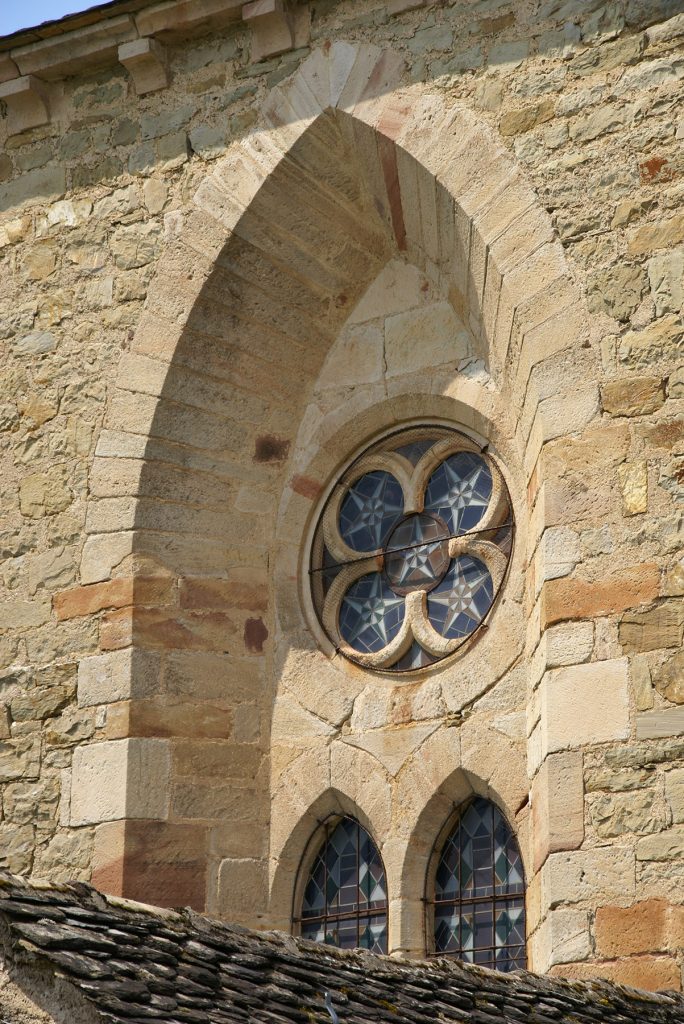Fortified and massive, the building seduces with its colossal dimensions and its stained glass windows. After visiting the fortress, extend your visit to the village towards the church: a fine example of southern Gothic art!
Built in the middle of the XNUMXth century at the instigation of Alphonse de Poitiers, Count of Toulouse and brother of the King of France, the Church of Saint John the Evangelist is a perfect testimony to the reconquest of the region by the Catholic power, in the day after the crusade against the Cathars. After climbing the village and visiting the fortress, let yourself be surprised by this monument of imposing proportions.

A witness of regional history
The church Saint John the Evangelist of Najac was built between the castral village dominated by fortress the Pause district where the pilgrims stayed. On this site, two previous buildings of worship followed one another, one of Visigothic origin, and the second of Romanesque period, dedicated to Saint Martin. The day after the reconquest of the region by Catholic troops, the royal authority decided to build a new church there reaffirming the Catholic cult on the Cathar doctrine.
The Najac dissidents had to finance the construction of this new place of worship or even work on the site themselves to redeem their behavior vis-à-vis the Church of Rome. Indeed, many of them did not recognize the authority of the Ile-de-France region and were condemned by the Inquisitors to do penance and pay heavy fines. One of the consuls of the city, Huc Paraire, was even burned alive in a public square for heresy.
A characteristic defensive architecture
Directed by the Dominicans, the work was carried out by the Burgundian architect Bérenger Jornet, between 1258 and 1280, and continued at the beginning of the XNUMXth century with the construction of the bell tower and the installation of the stained glass windows, the oldest of which are those of the western rose window. .
Consecrated in 1363, the church was flanked by a door initially forming part of the urban enclosure and was accessible by a portal to the north, surmounted by a Christ on the Cross from the Romanesque period, originally covered with a structural work forming courtyard.
Characteristic of southern gothic architecture, including the Sainte-Cécile cathedral in Albi, the Jacobins church in Toulouse and the Collegiate Church of Our Lady of Villefranche-de-Rouergue are perfect ambassadors, the Najac building is a vast stone chest punctuated by powerful buttresses and very small openings. Monumental and sober, the nave, without collaterals, was adapted to Catholic preaching, the gathering of the faithful and the veneration of relics. The building is lit to the west by a large multi-lobed rose window. This one is decorated with stained glass windows enhanced with grisaille dating from the XNUMXth century.
An interior of unsuspected richness
Listed as a Historic Monument since 1924, the church houses a quite exceptional furniture. Among the most notable elements, we can cite a XNUMXth century wrought iron gate that once contained a Paschal candle, a sculpted group associating a XNUMXth century Catalan Christ on the cross, the Virgin and Saint John the Evangelist from the XNUMXth century , of the XNUMXth and XNUMXth century paintings, stalls, a pulpit, a hard plaster XNUMXth century Stations of the Cross and liturgical objects arranged in the wall niches of the choir, including a remarkable XNUMXth century processional cross.
Made by a companion named Barthélémy Gauchy at the end of the XNUMXth century, the stained glass of the nave take place in polylobes formed of openwork slabs. Features of symbolic artistic movement, they present the attributes of the four evangelists, a chalice, the dove of the Holy Spirit and/or even the IHS of Christ by their extremely bright color, they bring a quite interesting luminosity to the XNUMXth century building whose architecture essentially emphasizes rurality.
Built on an enormous block of schist, the church was built over a large well more than 6 meters deep which allowed the population to take shelter inside and to supply themselves with water in the event of a siege. By kindly asking the caretaker, you will have the opportunity to see it.

Visit St-Jean Church
In order to view the different information, you can use the navigation arrows placed to the right of the table
Church of Saint John the Evangelist
12270 Najac






